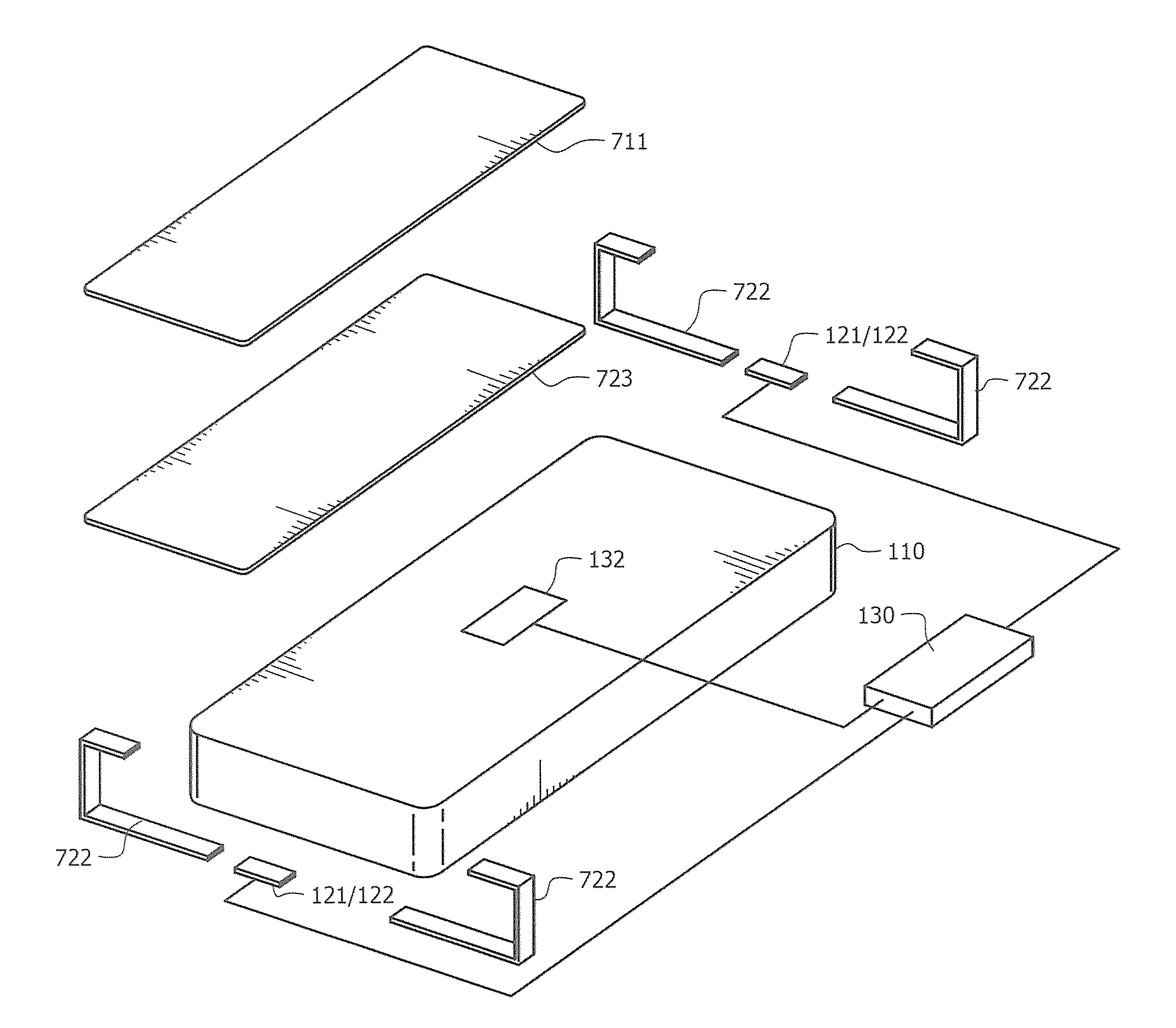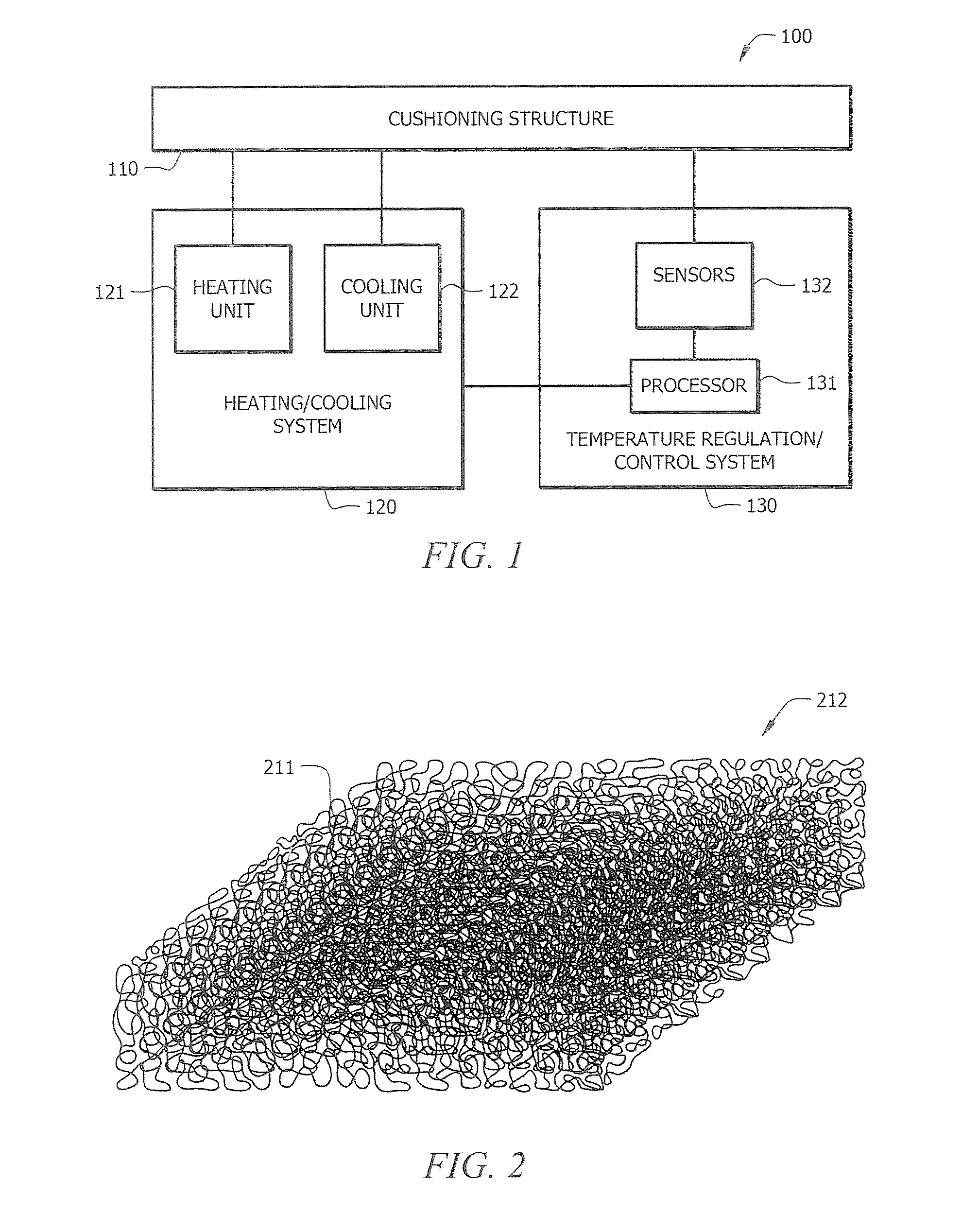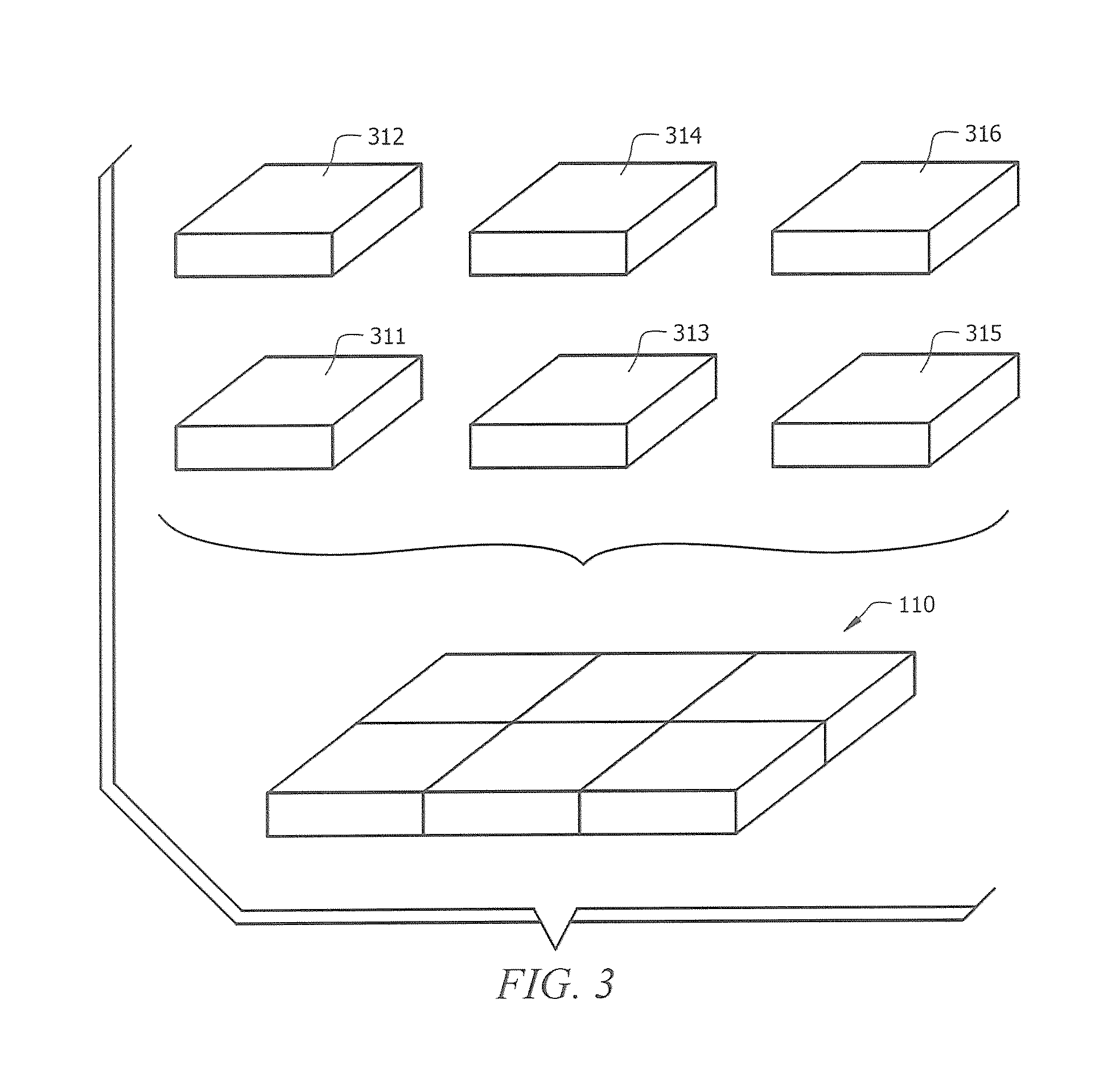Systems and methods providing temperature regulated cushion structure
a cushion structure and temperature regulation technology, applied in the field of cushion structures, can solve the problems of difficult cleaning or sanitizing, heavy materials traditionally used in providing resilient support in the foregoing cushioning apparatus, and inconvenient cleaning, etc., to achieve convenient cleaning and/or sterilization, facilitate cleaning, and facilitate movement.
- Summary
- Abstract
- Description
- Claims
- Application Information
AI Technical Summary
Benefits of technology
Problems solved by technology
Method used
Image
Examples
Embodiment Construction
[0029]FIG. 1 shows a functional block diagram of cushioning system 100 adapted according to embodiments of the present invention to provide temperature regulated hygienic, convenient configurations. In order to aid in understanding the concepts of the present invention, exemplary embodiments of cushioning system 100 will be described below with reference to mattress configurations. However, it should be appreciated that cushioning system 100 of the illustrated embodiment may comprise bedding, such as mattresses for use in homes, hospitals, hotels, emergency relief, etc., and seating, such as seat cushions for use in home furnishings, office furnishings, vehicle seats, toilet seats, etc.
[0030]Cushioning system 100 of the illustrated embodiment comprises three main subsystems. Specifically, the illustrated embodiment of cushioning system 100 comprises cushioning structure 110, heating and cooling system 120, and temperature regulation and control system 130.
[0031]Cushioning structure ...
PUM
| Property | Measurement | Unit |
|---|---|---|
| temperature | aaaaa | aaaaa |
| density | aaaaa | aaaaa |
| temperature | aaaaa | aaaaa |
Abstract
Description
Claims
Application Information
 Login to View More
Login to View More - R&D
- Intellectual Property
- Life Sciences
- Materials
- Tech Scout
- Unparalleled Data Quality
- Higher Quality Content
- 60% Fewer Hallucinations
Browse by: Latest US Patents, China's latest patents, Technical Efficacy Thesaurus, Application Domain, Technology Topic, Popular Technical Reports.
© 2025 PatSnap. All rights reserved.Legal|Privacy policy|Modern Slavery Act Transparency Statement|Sitemap|About US| Contact US: help@patsnap.com



